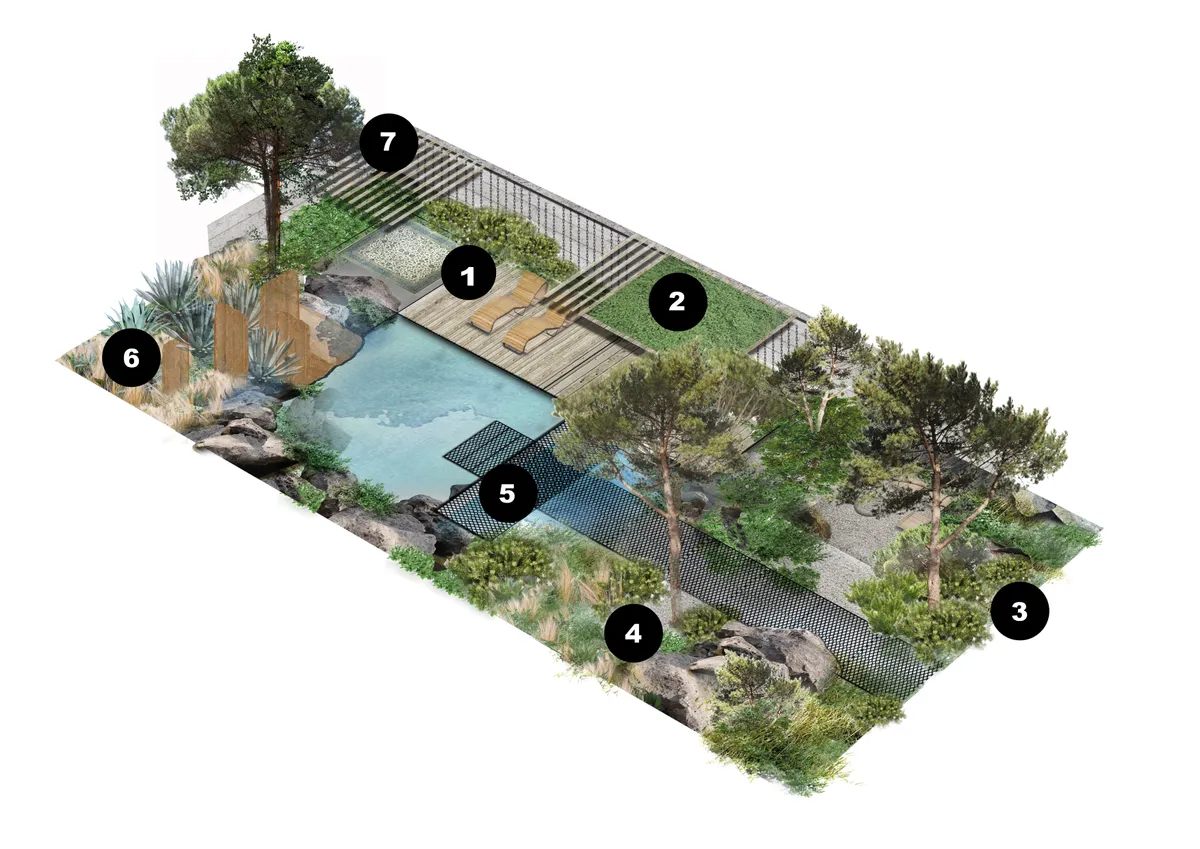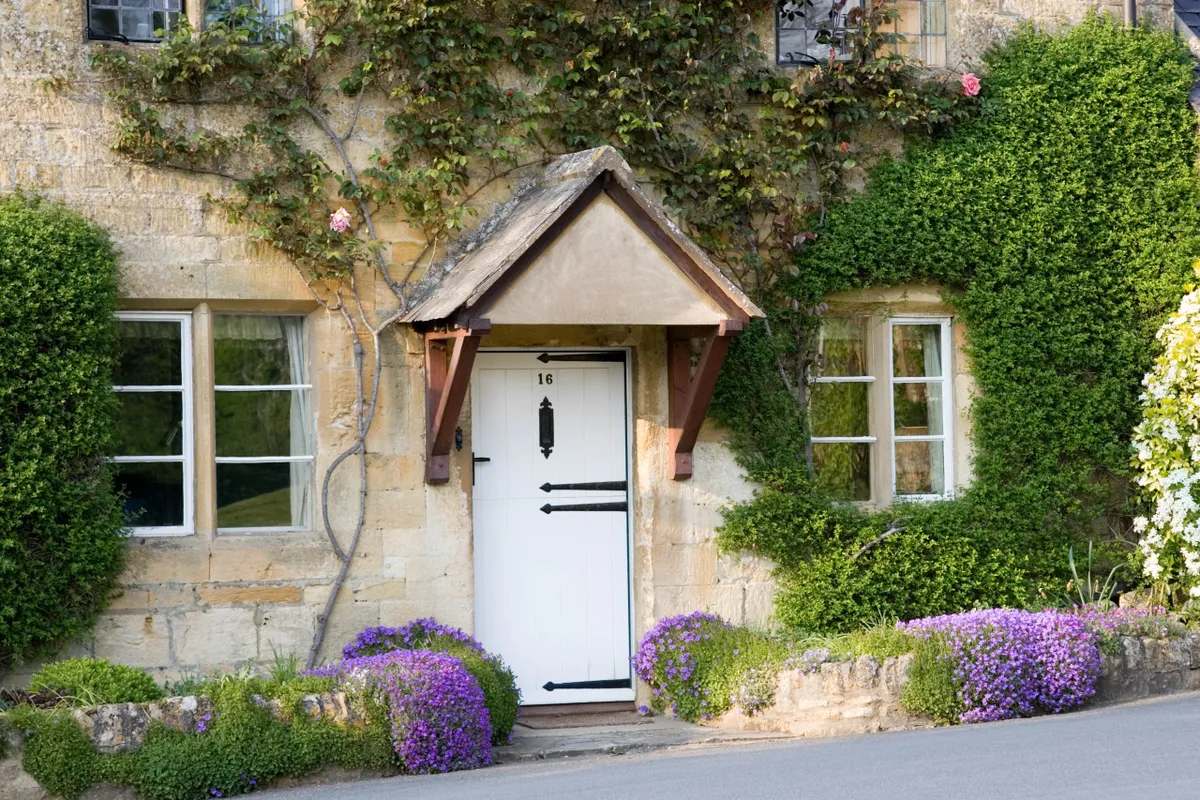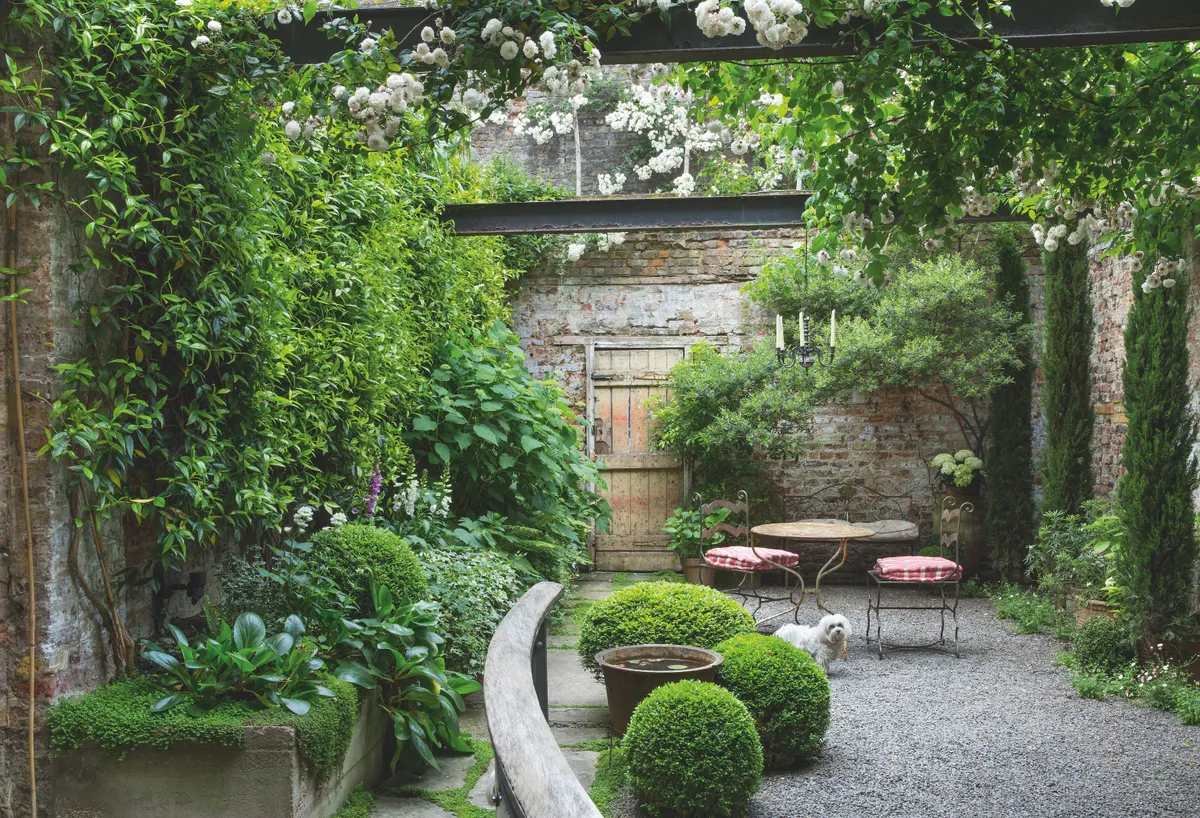As a child I spent so much time outdoors I came to think of our garden as a natural extension to the indoor living space. The boundary between house and garden was blurred, and when the weather was kind, our family spent more time outdoors than in. Our orchard with its gnarly apple and apricot trees was the best playroom my brothers and I could wish for. We spent hours playing hide and seek in the kitchen garden among the tall raspberry stems and giant sunflowers. Every corner of the garden was filled with memories and sentimental items, with the personalities of each family member reflected in different aspects of the garden: the style of the planting, the colours and materials used and in handcrafted fittings; collectively they told our family’s story. To this day it’s still the garden that holds the strongest associations of ‘home’ for me, more so than any other house I’ve lived in since.
Gardens are always evolving, and no garden has to be perfect right from the start
Garden designer, Ula Maria
When designing a garden, I think it is important to see that every garden has the potential to tell the story of those who inhabit it, making it a space that’s not only beautiful and functional, but meaningful too. Many people feel their house is a true reflection of themselves, but I believe it’s the garden where personality and relationships with our surroundings truly blossom.
The starting point
To design a garden that will reflect fragments of yourself might seem daunting at first, and it is sometimes hard to know where to begin. Most people are far more comfortable designing interior spaces, than working with outdoor plants and an arrangement of outdoor spaces. But it’s important to keep reminding yourself, that unlike interior spaces gardens are continuously evolving, and no garden has to be perfect right from the start; nature is much more intricate and forgiving.
Often, your home’s architecture and the local vernacular will inspire your choices for the garden. You can choose to match materials or find other materials that either complement or contrast their colour and texture qualities with those of your home.
Before embarking on a design, I always take time to explore and evaluate the site, as it’s important to consider a garden in its wider environment. Imposing something that goes against the grain of the site will always look unnatural and forced. Often, the best practice is to begin with a subtle base, on which you can introduce layers of personality over time. Smaller, more enclosed spaces are more forgiving, and will give you more freedom to establish the garden’s character without having to worry so much about its surroundings.

- Beautifully crafted furniture can form a design feature in itself. These sculptural loungers complement the reclaimed scaffolding boards - used to give the decking a unique character - and are positioned to make the most of the relaxing space by the water.
- Think about how your garden can enrich your lifestyle. Could you benefit from a quiet space in which to relax or an area to dine and entertain? By partially enclosing a space you'll be able to enjoy your garden on days when harsh sun or rain might otherwise keep you indoors. This pergola's green roof not only makes the design more aesthetically pleasing, but environmentally friendly too.
- Explore different styles of planting such – such as formal, clear-cut, playful, naturalistic or exotic – to find the one that best reflects your personality.
- To create a garden that is not only beautiful but personal too, consider taking inspiration from the place where you grew up, or include plants that are indigenous to places that have a sentimental connection for you.
- The raised walkway, made using metal mesh panels, gives the garden a contemporary and architectural feel that reflects its owner's style. When choosing prime materials, think about the overall character you want to reflect within your garden. Distilled, neutral colours suggest a calm and peaceful atmosphere, whereas bright and vivid colours would result in a playful and energetic look.
- There are different ways to introduce art into your garden. Some might prefer to use naturally occurring elements in their untamed forms, such as boulders that can double up as seating; others might prefer bold and daring sculptural pieces.
- Consider including an open space for favourite activities. Located at the furthest point of the garden overlooking the water , this spot designed with the pergola structure casting light shade from above.
How do you want to use your garden?
Another way of starting a garden is to think of it as an extension of your home, a space full of potential, with room to play, dine, rest and, above all, reconnect with nature. A garden will always work best if it ties in well with your lifestyle; how much time you spend outdoors and how you want to use the garden. Whether your priority is a kitchen garden, a dining space, or a specific, sport-related area, you need to identify key dedicated function areas that are important to you and your family. The more practical and useful the spaces you create in your garden, the more likely it is you’ll feel encouraged to tend and nourish that garden. However, if you have a lifestyle that doesn’t allow you to spend much time outdoors, then you may be better to concentrate on creating beautiful views that will be visible from the windows you look out the most.

It’s also incredibly important you don’t forget about your front garden. After all, this is the space that greets you every time you come home and it is the first ‘room’ of your home visitors will see – and as we know, first impressions count. Your front garden should be a miniature representation of what anyone visiting you for the first time can expect to find in the rest of your home – and that includes you.
What does your garden say about you?
Many of us enjoy adding our unique and personal touches to our home. Likewise, the smallest details can give a garden a distinctive look that reflect its owner’s personality. If the key structural features and the background materials of a garden are relaxed and unified, then the smaller details and design elements could be of a more eclectic nature, to help inject charm and character into the space. Water features, sculptures, and plant pots are some of the most obvious design elements used to introduce unique character into the space. But, I think it is important not to forget that other features, such as fencing and gates, can also be used to express your design flair. For example, if you were to install architectural, dark-coloured, heavy metal gates you will present a completely different personality and feel than if you install more fragile gates with an intricate latticework design.

But most of all, it’s our planting choices that reveal our personality in a garden. Some planting designs are colourful, loud and showy, proudly standing out from the neighbouring gardens. Some are light and dreamy, yet slightly chaotic, with sways of colourful flowers perfectly blending one into another and their seedheads swaying in the wind. Others are structural, unified and perfectly balanced, with flawless topiary and a freshly mown lawn. In some gardens, you can find plants from far-flung places, indigenous to their owner’s home countries, or rare specimens passed on from one generation to another.
Keep experimenting
Like our personalities, our gardens consist of many layers, shaped by time and events. I believe it is important that we keep experimenting, searching and building upon those layers that result in the most characterful gardens that can be shared with others. It is essential to remember that unlike interior spaces, even the best gardens are never finished, and often frayed around the edges. Gardens require time and tending, and nature can’t exactly be rushed. However, I believe, that creating a garden you truly care for, can be as rewarding, if not more so, than perfecting any one of the rooms inside your house. Remember, unlike any of your interior rooms, in the garden, the sky truly is the limit.
Words and illustration by Ula Maria